| |
Suicide Attempts Young HIV Perinatally Infected or Exposed
|
| |
| |
IAC: Arrests, City Stress, Life Events Tied to Suicide Attempts in Young With HIV - (08/03/22)
Recent arrests, city stress, and stressful life events-all linked to systemic racism-raised chances of attempted suicide in a study of 339 young people with or exposed to HIV [1]. HIV-positive young people had about 75% higher odds of a first report of attempted suicide than did HIV-negative youth.
For the whole study group, 9 factors were associated with a first suicide attempt in the age-adjusted analysis at the following odds ratios (OR) and 95% confidence intervals (CI):
Whole study group
- HIV-positive (vs negative): OR 1.74, 95% CI 1.04 to 2.92
- Identifies as straight/heterosexual: OR 0.30, 95% CI 0.17 to 0.51 (lowers odds)
- Arrested/jailed in past year: OR 2.56, 95% CI 1.16 to 5.67
- Negative life events: OR 1.23, 95% CI 1.09 to 1.39
- City stress: OR 2.07, 95% CI 1.40 to 3.06
- Personal self-concept: OR 0.51, 95% CI 0.32 to 0.83 (lowersodds)
- Family self-concept: OR 0.40, 95% CI 0.26 to 0.60 (lowersodds)
- Any DISC* psychiatric disorder (yes vs no): OR 3.32, 95% CI 2.06 to 5.35
- DISC* substance disorder (yes vs no): OR 2.60, 95% CI 1.49 to 4.53
Associations with first suicide attempt in young PLHIV were similar but differed slightly from the overall group:
PLHIV young people
- Identifies as straight/heterosexual: OR 0.27, 95% CI 0.14 to 0.52 (lowers odds)
- Pregnancy (self or partner): OR 2.28, 95% CI 1.08 to 4.81
- Arrested/jailed in past year: OR 3.05, 95% CI 1.26 to 7.40v - Negative life events: OR 1.27, 95% CI 1.11 to 1.46
- City stress: OR 2.28, 95% CI 1.46 to 3.57
- HIV stigma: OR 2.46, 95% CI 1.27 to 4.75
- Personal self-concept: OR 0.45, 95% CI 0.26 to 0.80 (lowersodds)
- Family self-concept: OR 0.36, 95% CI 0.22 to 0.57 (lowersodds)
- Any DISC* psychiatric disorder (yes vs no): OR 3.15, 95% CI 1.77 to 5.60
For HIV-exposed but uninfected youth, only two variables were associated with first suicide attempt:
HEU young people
- Any DISC* psychiatric disorder (yes vs no): OR 4.60, 95% CI 1.84 to 11.51
- DISC* substance disorder (yes vs no): OR 5.83, 95% CI 2.23to 15.29
The New York State/Columbia team noted that three variables associated with a suicide attempt in adolescents and young adults-recent arrests, city stress, and stressful life events-are linked to systemic racism in other research. The investigators saw a need for more research on (1) possible links between HIV stigma, pregnancy, and suicide in young people with HIV infection, and (2) family and personal self-concept as protective factors. For youth with HIV, they suggested that existing interactions with medical clinics may offer opportunities to intervene and address suicide in this vulnerable group.
-----------------------------
HIV and suicide risk across adolescence and young adulthood: an examination of sociodemographic, contextual, and psychosocial risk factors for attempted suicide in a longitudinal cohort of youth affected by HIV
AIDS 2022 July 29-Aug 2 Montreal
program abstract
BACKGROUND: Risk for attempting suicide increases dramatically as children become adolescents and young adults (AYA), with chronic health conditions being a risk factor. To date, no studies have examined correlates of suicidality across development in AYA living with perinatal HIV-infection (AYALPHIV) and those perinatally HIV-exposed but uninfected (AYAPHEU). Findings can inform much-needed interventions to support AYALPHIV and AYAPHEU as they age.
METHODS: Data come from a longitudinal New York City-based study of health and psychosocial functioning in AYALPHIV and AYAPHEU (mean enrollment age = 12 years; current mean age = 27 years) interviewed every 12-18 months. Psychiatric disorders and first-reported suicide attempt were assessed with the DISC. Generalized estimating equations were used to examine associations between first-reported suicide attempt and sociodemographic, contextual, and psychosocial correlates measured concurrently across 6 time-points.
RESULTS: At enrollment, 51% were female, 72% heterosexual, 57% Black, and 50% Latinx. Attempted suicide was significantly higher among AYALPHIV (27%) than AYAPHEU (16%) (OR = 1.74, p = 0.02). In the full and AYALPHIV samples, sexual minority identity, lower self-concept, negative life events, and past-year arrest were associated with increased odds of attempted suicide. For all groups, past-year anxiety, mood, or behavior disorders were associated with increased odds of attempted suicide. Among AYALPHIV, pregnancy and HIV stigma were associated with increased odds of attempted suicide. Interactions by HIV status and age group were found: substance use was more strongly associated with attempted suicide among AYAPHEU than AYALPHIV, while negative life events and higher religiosity were more strongly associated with increased odds of attempted suicide among AYA ages 19 and older than those 18 and younger.
CONCLUSIONS: Adolescence and young adulthood is a critical period when risk for attempted suicide rises precipitously. As our cohort aged into adulthood sociodemographic, contextual and psychosocial factors placed them at risk for suicidality and only higher self-concept was protective. Unique risks for attempted suicide were evident by PHIV-status with HIV stigma and pregnancy impacting AYALPHIV, and substance use a risk among AYAPHEU. Assessing for suicide risk and correlates with attention to aging can inform preventive interventions tailored to meet AYALPHIV and AYAPHEU needs.
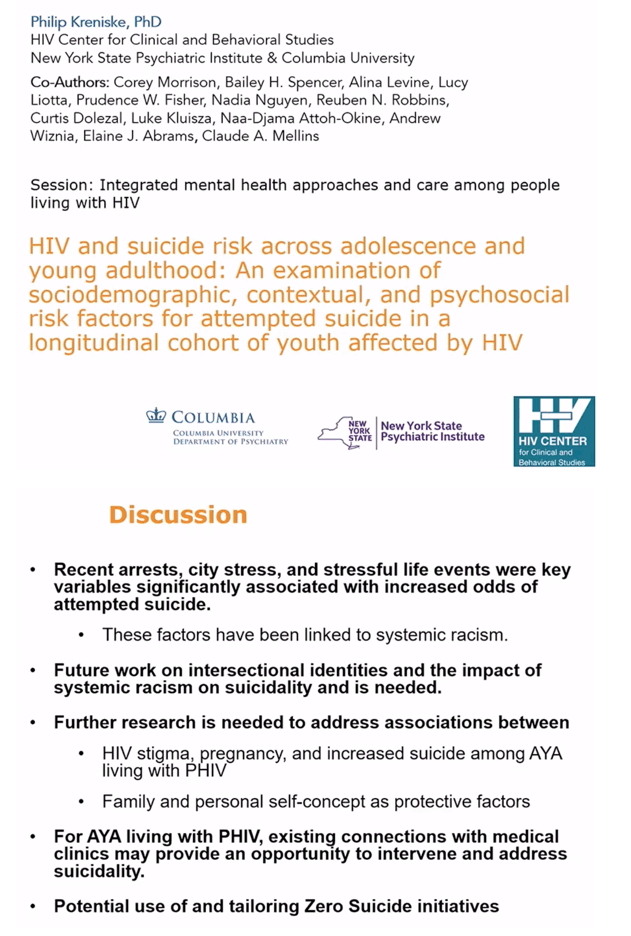
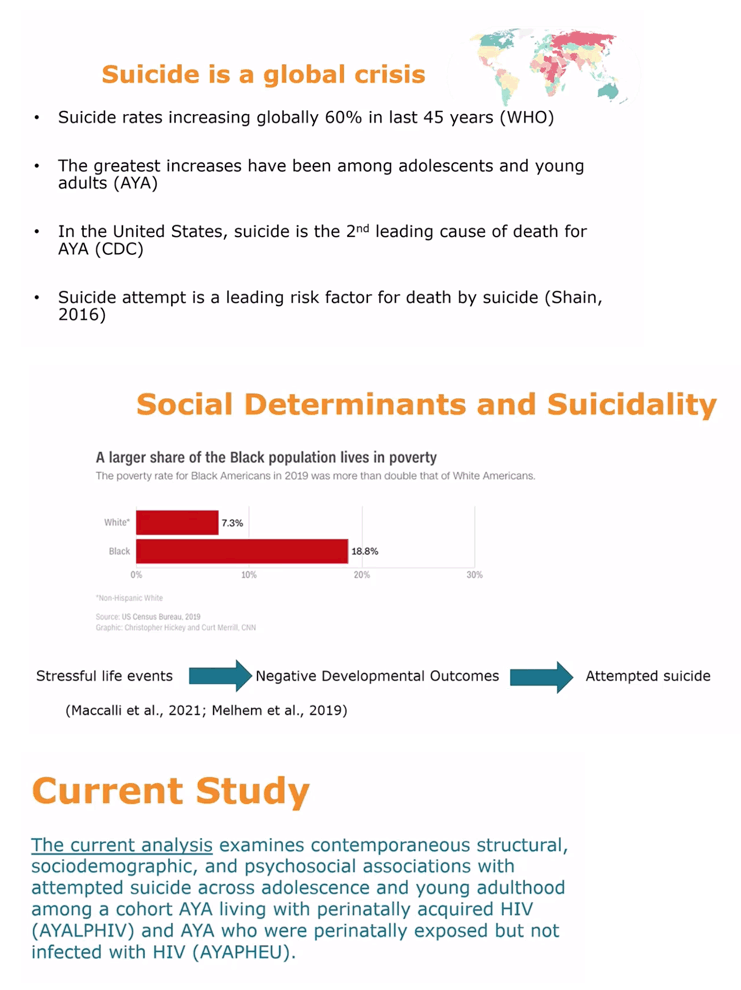
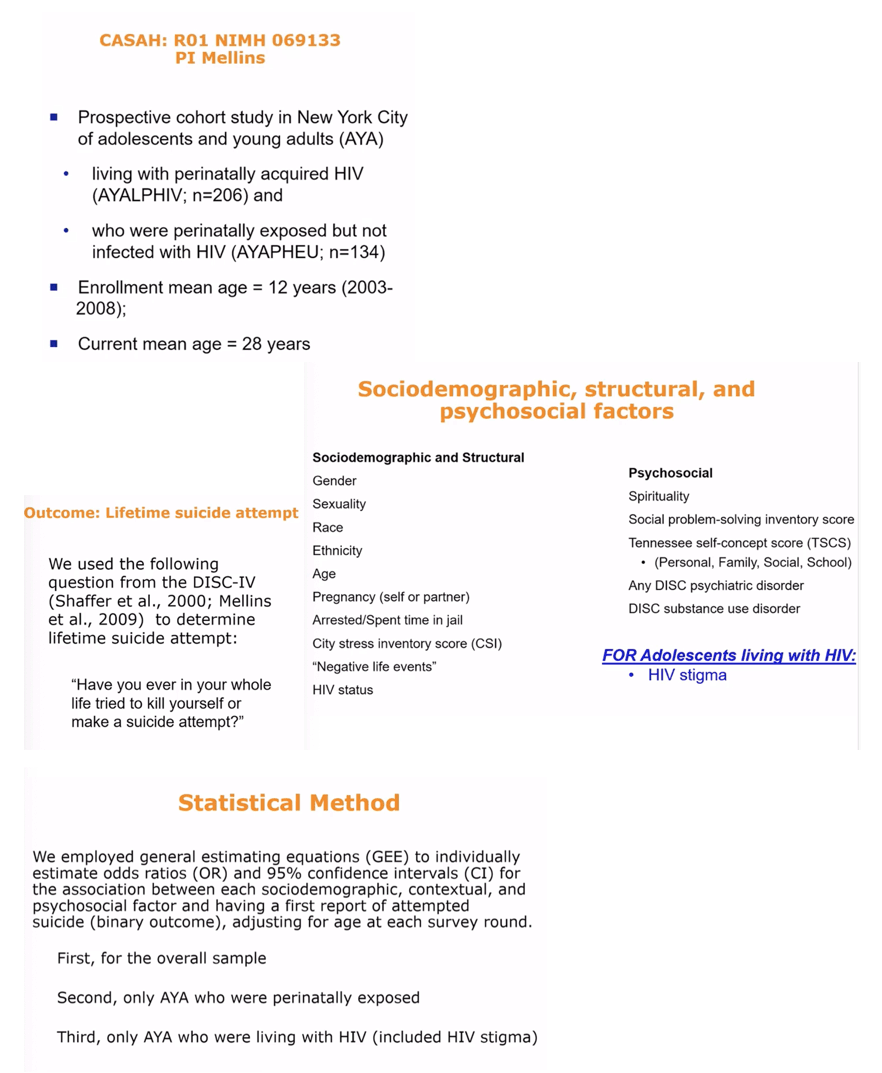
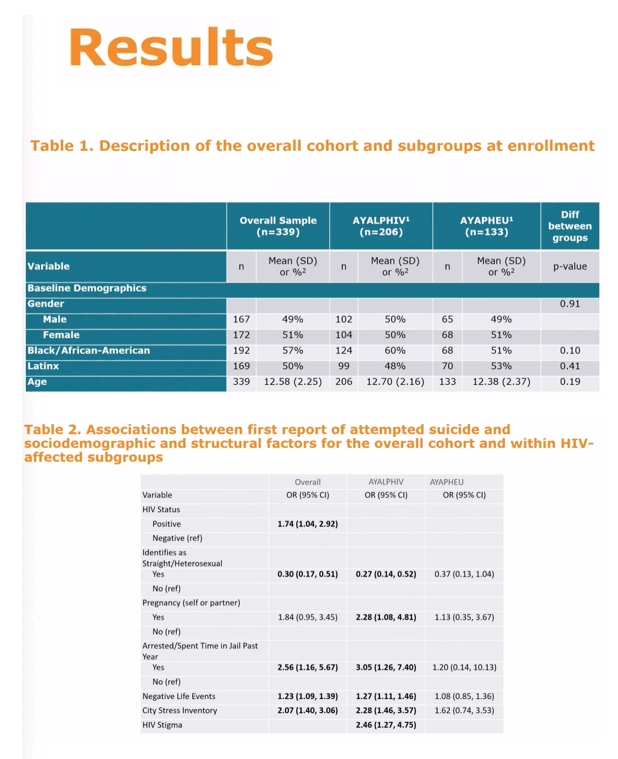
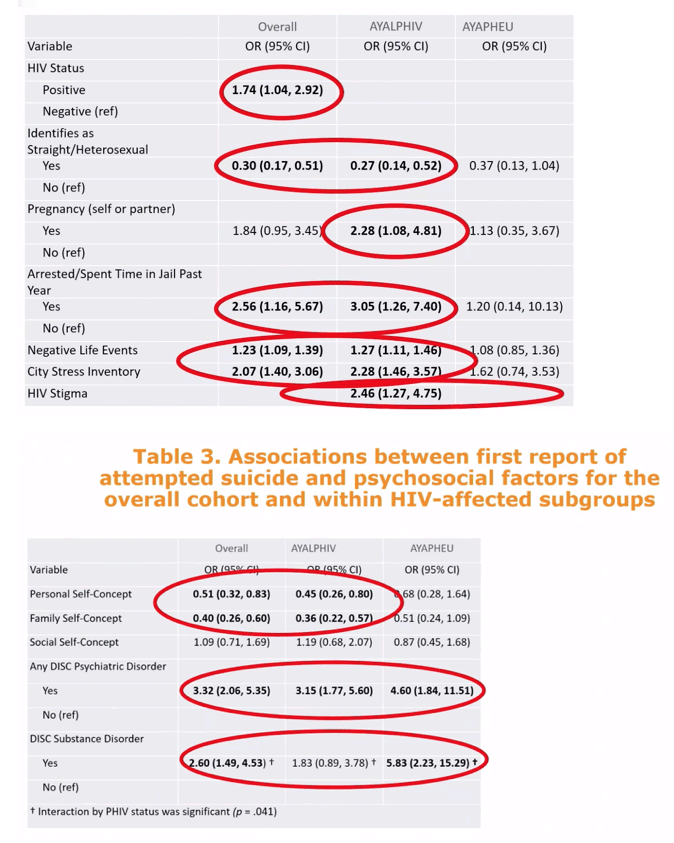
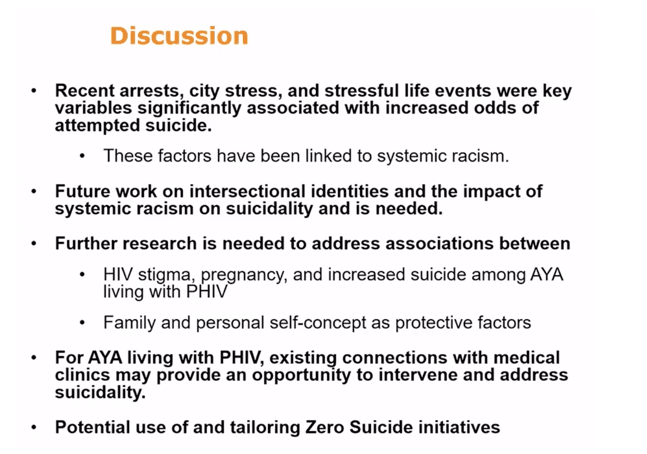
|
|
| |
| |
|
|
|